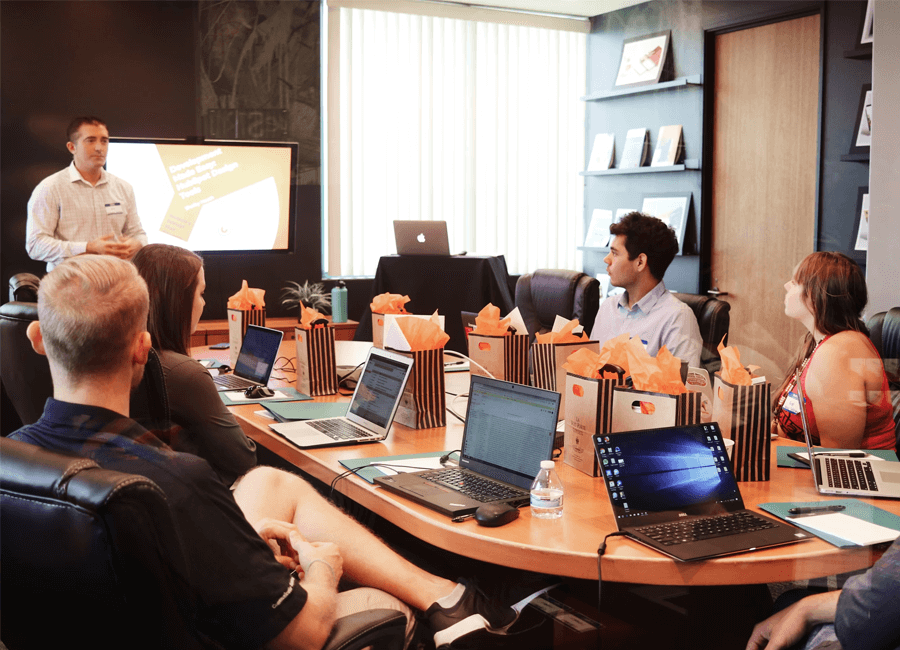Video research is a relatively new concept compared to other methodologies in market research, however, it has rapidly proven valuable to insight experts and stakeholders everywhere. Through this recognition has come a dramatically increased demand for valuable video data, so the insight industry has developed new tools to support the rapid uptake of this new methodology, and whenever new methods and tools come into being, so do best practices on how to use them to their full advantage.
FlexMR Heads of Insight and Operations, Charlotte Duff and Gareth Bowden respectively, have worked with the Video Booth, Focus GroupMR and VideoMR tools since their creation, and thus have garnered some effective best practices to increase the impact and quality of video data.
1. Understand the Power of Emotional Connectivity
This first best practice is essential to unlocking the power of video research, understanding the impact emotional connectivity plays in insight generation, as well as activation, cannot be understated.
When it comes to insight generation, video research can enhance the emotional connection between respondents, researchers, and stakeholders. Video tools such as our own Focus GroupMR helps provide the intimacy of an in-person focus group but from the comfort of the participant’s own home. In contrast, FlexMR's Video Booth function helps capture emotional video data from the traditional quantitative survey tool.
And then in regards to insight activation, emotional connection is a key driver of stakeholder action on insights – video research brings stakeholders much closer to their research respondents, whether they’re brand customers, consumers, or the general public. Clips and montages from video research can provide impactful verbatim insights and direct emotional intimacy that otherwise might not have been achieved with text or number-based data and insights.
Gareth’s practical perspective points us in the right direction when it comes to enhancing the effectiveness of emotional connection in video focus group research, mentioning that, “if your goal is exploratory or you're looking at co-creation, online video focus groups are a great approach. Allowing people to join a focus group from the comfort of their own home, you can bring together a target group in a relaxed atmosphere and generate that organic, spontaneous data that can act as a real problem solver or inform out-of-the-box thinking.”
2. Know When to Use Video Research
However, even though video research can be a powerful tool, it’s only powerful when used in the right scenarios with the right intentions. Knowing when to use video research is just as crucial to ensuring the research will be high quality as any other best practice. Gareth mentioned a couple of instances above where video research will be very helpful in a market research experience, and Charlotte has some further insight that can help insight experts too:
“Whilst video research has become a lot easier and a lot more commonplace in the last couple of years, it shouldn't just be a 'go-to' methodology - it should only when the objectives and sample mean that it is the best and most appropriate methodology."
While video research can be impactful on its own, Charlotte mentions that “video research can also be great for complementing other findings, and I think it can be ideal when you want to really help the message land. I tend to think that video outputs are supporting outputs, rather than the sole output of a project.”
Gareth’s insights support this, as he comments that, “using video methodologies is highly dependent on goals and objectives. While impactful, this methodology should be oriented effectively to the goals of the research experience for full impact.
He further explains, “if you're looking to capture a wide range of snapshots or quotes then using a survey video question is a great approach. Collecting a high number of responses, identifying key trends through analysis, and then finding the perfect quote or clip to match the trend is most easily achieved through this methodology. However, you'll need to prepare and focus your respondents effectively through effective instruction and clear boundaries.”
3. Design it Well and Implement Impactful Moderation
While this might seem like two different best practices rolled up into one, they do deserve to be together as one cannot exist without the other. Impactful moderation is only achievable with great preparation, and an effective research design would be nothing without impactful moderation to bring it to life.
On this topic, Gareth notes that “if your goal is to explore a clearly defined topic in depth, then 30– to 60-minute one-to-one interviews is the ideal methodology. Exploring the context and journey of each participant in a one-to-one format can allow the researcher to gain real insights into why, for example, a consumer type encounters certain issues or prefers to use certain systems and communications methods.”
One of the key things to avoid in this area according to Gareth is trying to fit too much in – a danger that all insight experts face at many points in their careers. Gareth emphasises that insight teams must “keep the session focused on the topic and the objectives, or you'll end up having a great conversation but coming out with very little insight.”
Gareth mentions that inexpert moderation can significantly harm video research, as “a focus group needs a skilled moderator to make sure all voices are represented and participants feel comfortable sharing. A focus group where everyone takes a turn answering a moderator question means there's no organic interaction between participants and is a waste of time, effort and money.”
| Tweet This | |
| From design and implementation all the way to reporting, there are numerous best practices to learn if the aim is to conduct high-quality video research. |
4. Don't Neglect Reporting
Lastly, conducting high-quality video research would mean nothing if we didn’t report it well. Charlotte has some great experience and insights into the video reporting process to share:
“The length of any video outputs is really key as also how it is blended into wider findings. In some cases, more shorter videos highlighting things throughout a presentation are more appropriate, other times, a slightly longer video included right at the end is best as that can be the aspect of the presentation that the audience leaves in their mind.
Having a video output that is too long in length, can be worse than not including one at all. Too long and the audience zone out, missing the key details. I often think that about 3 minutes is the optimal length, especially when presenting it to an audience unfamiliar with insights and market research. You might have to have a longer, more detailed output for that audience familiar with insights for them to really get a sense of the data if the video output isn't being used for a more supporting role.
I also think that too many different clips within the video can be a negative, you don't want it necessarily switching between too many participants too frequently. When creating a video montage, we do well to approach it in a similar way to prepare a presentation, think about what the data is telling you and then present it in a way that follows that story to take the audience through the journey.”


















